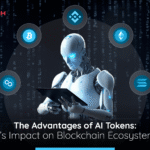Introduction
Once upon a time, stories lived in books, libraries, and handwritten journals. Today, they live in screens, apps, and digital universes. Storytelling, one of humanity’s oldest arts, is undergoing a massive transformation thanks to digital storytelling platforms.
In the 21st century, readers are not just reading — they’re watching, listening, interacting, and even co-creating stories. From Wattpad to Substack, from YouTube short stories to AI-driven narratives, the landscape of literature is expanding beyond paper and ink.
This evolution is redefining what it means to be a writer, a reader, and a storyteller.
🌐 The Digital Revolution in Storytelling
Digital platforms have democratized creativity. Once, publishing required approval from editors and literary agents. Now, anyone with a story and an internet connection can share it instantly.
Whether you write poetry, fiction, or essays — digital storytelling platforms allow your words to reach global audiences in seconds.
Popular examples include:
- Wattpad – A community-driven platform where young writers build massive fan bases.
- Medium – A blog-style publishing platform for essays, reflections, and thought pieces.
- Substack – For writers who want to publish newsletters and build a loyal reader community.
- Reedsy / Inkitt / Radish – Hybrid publishing and storytelling apps combining technology and creativity.
📲 From Page to Screen: The Rise of Interactive Literature

Interactive storytelling has redefined the reader’s experience. Readers now want to be part of the story, not just observers.
Examples include:
- Choose-your-own-adventure stories on mobile apps.
- Interactive fiction where readers make decisions for characters.
- Visual novels that combine text, animation, and music.
For instance, games like Life Is Strange and Detroit: Become Human are examples of digital storytelling where narrative choices shape outcomes. These experiences blur the line between literature, cinema, and gaming.
This trend shows how digital storytelling platforms have made literature immersive and experiential.
💡 How Digital Platforms Empower Modern Writers
Digital spaces have created countless new opportunities for writers, especially young creatives.
1. Freedom from Gatekeepers
No more waiting for traditional publishers to say “yes.” Writers can self-publish on platforms like Amazon Kindle Direct or Wattpad and build their audience directly.
2. Global Readership
A teenager from Pakistan can now have readers in America, Japan, or Europe — all because of digital access. Stories are no longer confined by borders.
3. Creative Collaboration
Platforms allow collaboration between writers, editors, artists, and even AI tools. Story creation has become a team effort powered by innovation.
4. Monetization Opportunities
Writers can earn through paid subscriptions (Substack), ads (Medium), or book sales (Amazon Kindle). Creativity and income now go hand-in-hand.
🧠 The Role of Technology in Storytelling
Artificial Intelligence (AI)
AI tools help generate story ideas, analyze tone, or even assist in editing. While AI can never replace human emotion, it’s a helpful partner in brainstorming or overcoming writer’s block.
Virtual Reality (VR) & Augmented Reality (AR)
Imagine reading a story where you can walk through scenes using VR glasses. That’s the next phase of immersive literature. Some authors already create AR-enhanced storybooks where illustrations come alive when viewed through apps.
Data-Driven Insights
Writers now use analytics to track engagement — what readers love, skip, or highlight. These insights help authors craft better, more relevant stories.
Audiobooks & Podcasts
Digital audio platforms have revived storytelling in oral form — the oldest way humans told stories. Now, platforms like Spotify, Audible, and YouTube bring literature to listeners worldwide.
✍️ How Young Writers Can Adapt
As digital spaces evolve, so must writers. Here’s how young creatives can thrive in this era:
- Build an Online Presence
- Create a blog, Medium account, or portfolio to showcase your work.
- Engage with Communities
- Join platforms like Wattpad or Scribophile to connect with other writers.
- Experiment with Formats
- Try short-form fiction, newsletters, or podcasts. The modern writer is multi-platform.
- Leverage AI Tools Wisely
- Use tools like ChatGPT, Grammarly, or Jasper for support — not as replacements for creativity.
- Learn Digital Marketing Basics
- Understanding SEO, keywords, and social media can amplify your writing’s reach.
💬 Changing Reader Expectations
Readers today are not passive. They want:
- Personalization: Stories tailored to their tastes.
- Speed: Bite-sized stories that fit busy lifestyles.
- Interactivity: Polls, choices, or feedback options.
- Multimedia: Visuals, sound, and motion with words.
This evolution means writers must think like creators — blending storytelling with technology, visuals, and emotions.
🌍 How Digital Storytelling Platforms Promote Diversity
Digital spaces have opened doors for underrepresented voices. Now, writers from every background can tell their stories without barriers.
For instance:
- Regional and indigenous writers are sharing folk tales online.
- Female authors are leading new digital movements.
- LGBTQ+ creators are building global communities through literature.
These platforms are breaking cultural and language boundaries, allowing literature to become more inclusive and global.
💻 The Future of Storytelling: What Lies Ahead
As we move toward 2030, several trends will define the next era of literature:
1. AI-Generated Story Collaborations
AI won’t replace writers but will become co-creators — generating ideas, world-building, or assisting with continuity.
2. Immersive Story Worlds (Metaverse)
Imagine entering a digital world where you live the story — visiting virtual book fairs, meeting fictional characters, or interacting with authors in 3D environments.
3. Blockchain Publishing
Writers will soon protect their copyrights using blockchain, ensuring transparency and fair payment through smart contracts.
4. Community-Driven Narratives
Stories will evolve collaboratively — with readers voting, commenting, and influencing future chapters in real-time.
5. Globalization of Micro-Stories
Platforms like Instagram Reels, YouTube Shorts, and TikTok are turning micro-stories into a new literary form. Storytelling will continue shrinking in length but expanding in creativity.
📚 Digital Storytelling Platforms You Should Explore
- Wattpad: Ideal for fiction and fan-based storytelling.
- Medium: Best for reflective, educational, or literary essays.
- Substack: Great for serialized fiction and newsletters.
- Reedsy & Inkitt: Help with publishing, editing, and feedback.
- YouTube & Spotify: For narrative podcasts and audio stories.
- Kindle Direct Publishing (KDP): For self-published e-books.
- Patreon: Monetize writing through reader subscriptions.
These platforms are the bridges between creativity and opportunity — giving writers full control over how they share and grow.
🎨 The Blurring Line Between Author and Audience
In digital storytelling, the audience isn’t just consuming — they’re co-creating. Comments, polls, and feedback loops help writers adapt stories on the go.
This makes literature alive — evolving in real-time, shaped by collective imagination.
❓FAQs
Q1: What is a digital storytelling platform?
A: It’s an online space where writers share stories using text, visuals, or multimedia — reaching readers globally without traditional publishing.
Q2: Can digital literature replace traditional books?
A: Not replace, but complement. Digital platforms make literature more accessible, while physical books continue offering emotional and aesthetic value.
Q3: How can beginners start digital storytelling?
A: Start small — create short stories or blogs, share them on platforms like Wattpad or Medium, and engage with readers.
Q4: Is AI harming creative writing?
A: No. When used ethically, AI enhances creativity by helping writers brainstorm ideas, improve grammar, and save time.
Q5: What’s the biggest advantage of digital storytelling for teens?
A: Freedom! Teens can express their creativity, build global readership, and turn writing into a career from an early age.
🪶 Conclusion
The future of literature isn’t just written — it’s experienced. With digital storytelling platforms, stories travel beyond pages, turning into visuals, sounds, and emotions that connect people worldwide.
For young writers, this is the most exciting time in history. No waiting, no gatekeepers — just imagination, innovation, and an open world ready to listen.
So write your story. Publish it online. And let the world hear your voice — because the future of storytelling belongs to those who dare to tell it differently.



